Power play: What cyclists teach us about energy efficiency

A version of this story appears in the June 27, 2016, edition of Sports Illustrated. Subscribe to the magazine here.
A road bike race is about just one thing: energy. Pro and elite amateur riders obsess about their personal power data extracted from sensors on bikes, but total energy—power multiplied by time—is what really counts. The team that reaches the finish line in first place is the one that figures out how best to create, conserve, and expend that energy.
Take stage 3 of the 2016 AMGEN Tour of California on May 17, for example. The route opened with a 96.7 mile ride up the coast from Thousand Oaks to Santa Barbara, interspersed with a couple of short climbs, and ended with a 7.4 mile, average 8% gradient, winding climb up Gibraltar Road. The long prologue required endurance, carefully conserving energy; the steep final climb needed raw strength. The rider who had best conserved his energy would be positioned to barge up that final climb.
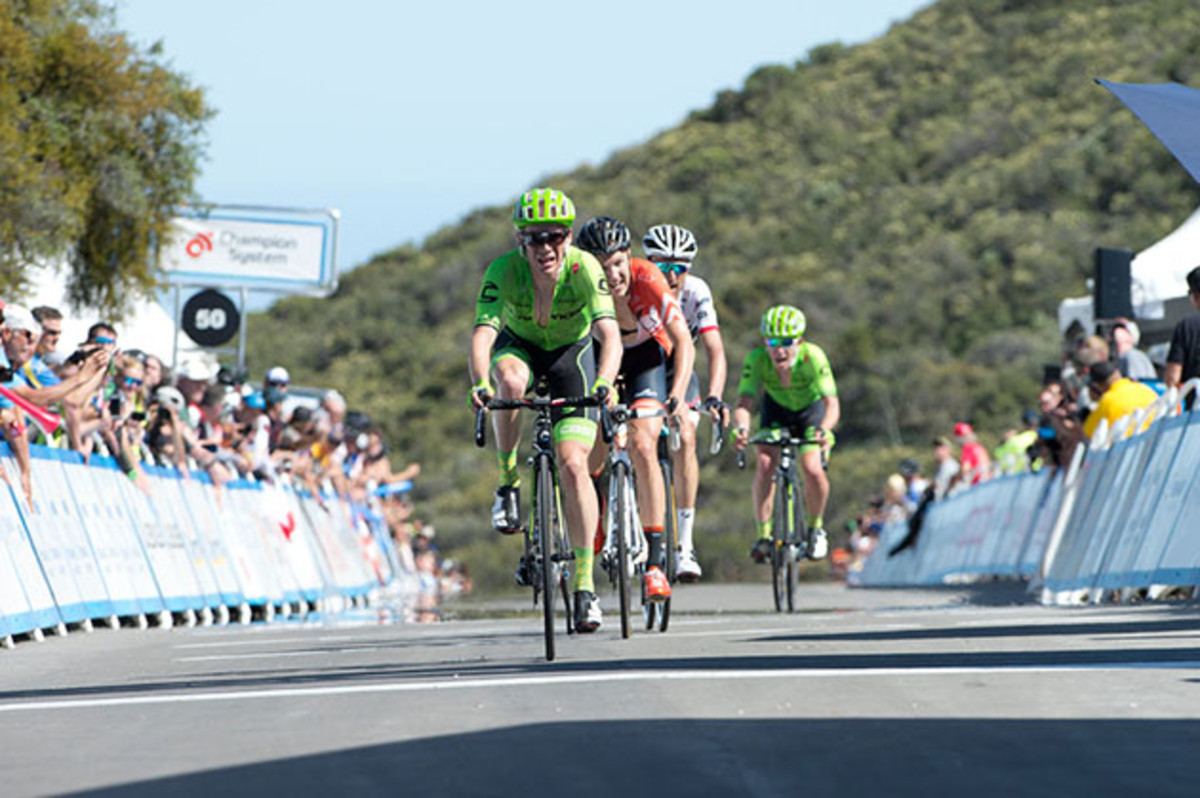
“It all comes down to the power-to-weight ratio,” says former pro cyclist Jens Voigt of ending inclines. “It’s just survival of the fittest.”
On a climb like Gibraltar Road, Voigt says the peloton will “explode into a million pieces.” The power-to-weight ratio is about how much the riders have left to give versus how many pounds they must drag up the hill. To shave weight at the bottom of big hills, riders even dump extra bottles and spare food.
• The rise of cycling's gravel grinders: Ruthless terrain, camaraderie and dirt
Cannondale rider Andrew Talansky, the 2015 U.S. individual time trial champion, was at the Tour of California with six other Cannondale teammates to support Lawson Craddock in the quest for victory in the overall general classification. “Basically support means whatever needs to be done, you’ll do,” Talansky said ahead of Stage 3. Teammates might be called on to take the lead position on the road, allowing others to hide in the slipstream behind. Or to ferry bottles and energy bars from the cars at the back of the peloton. Or to corral opposing teams into matching Cannondale’s strategy, all allowing the featured rider to conserve energy.
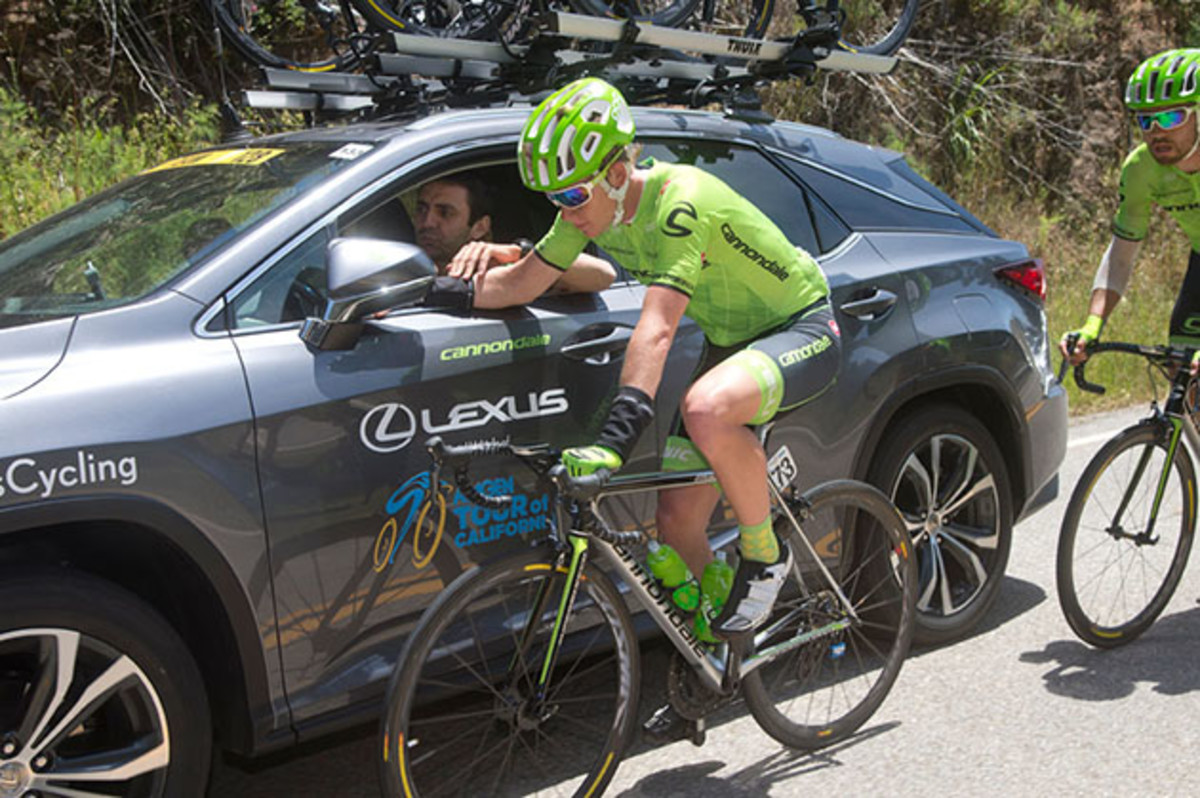
“For somebody like Lawson, the goal is to conserve as much as possible,” Talansky explained. “No stress for him. Keep it calm, keep it relaxed.”
The task of orchestrating Cannondale’s efforts on Stage 3 came down to Juan Manuel “Juanma” Gárate, an ex-pro cyclist who now works as a sport director. While driving the main team support car, Gárate juggled three radios, his cellphone, and a GPS device, redistributing resources in real time as the intensity of the race ebbed and flowed. Though Craddock was the focus of the team’s main effort, Ben King had won the yellow jersey the day before and so Cannondale rallied around supporting him, too. “The ideal situation is that [Craddock and King] arrive until the really final part of the day with options to win the overall of this race,” Gárate explained.
• Australia's head of nutrition Louise Burke: How to fuel Olympic athletes
The tradeoff between energy conservation and energy expenditure is embodied in the Cannondale SuperSix Evo bikes the eight riders were using. Exactly the same as the highest-end Cannondale bikes you can buy in a store, if you have $10,000 to spend, the most obvious difference between Cannondale’s race bikes and those of its competitors is shape. Many pro bikes have conspicuously sculpted aerodynamic frames, whereas the Cannondale bike has a more classical appearance—it doesn’t look fast.
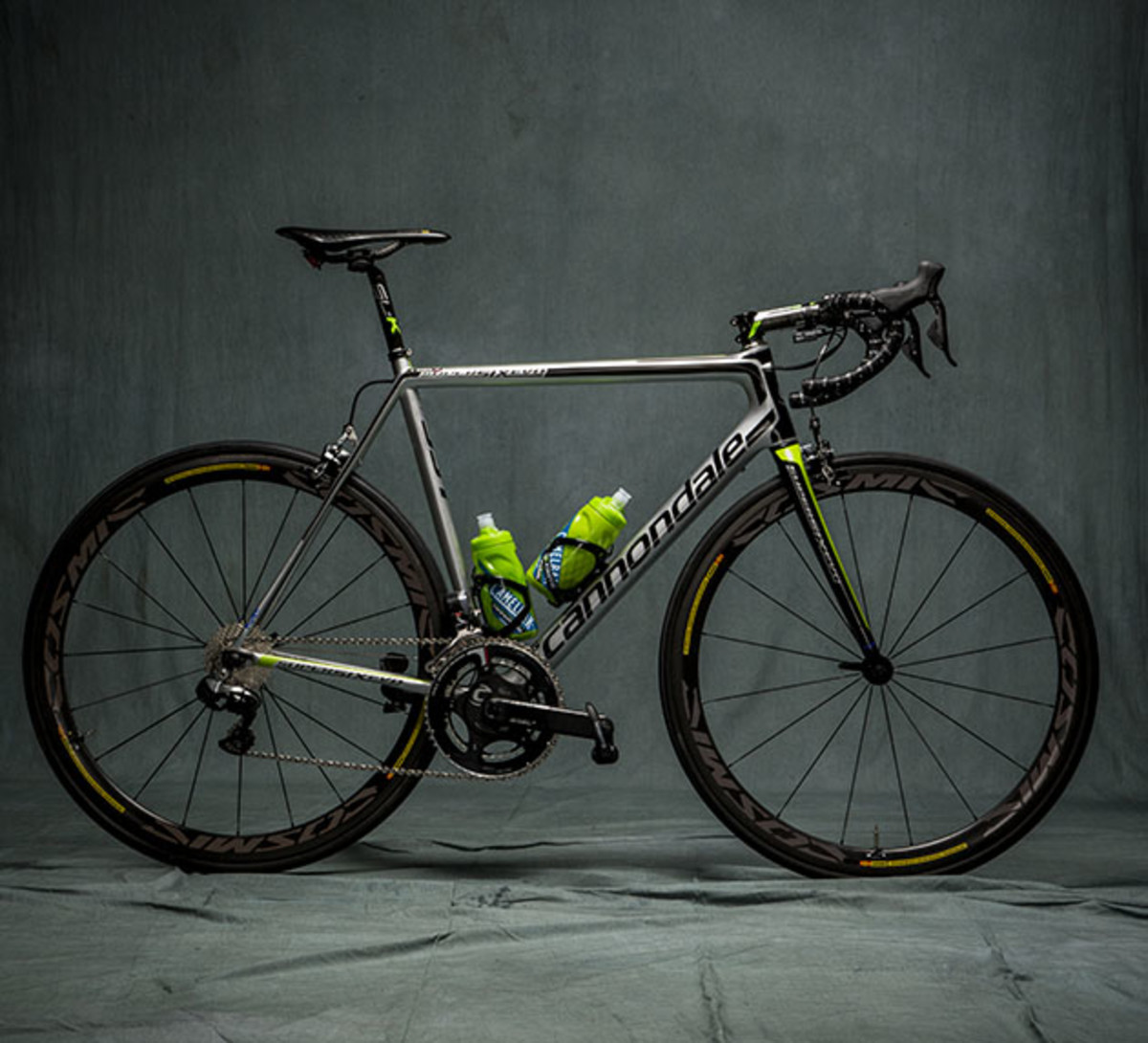
“Even if you have the best aero bike, if you don’t feel good on it, you can’t perform. You can’t deliver what you have in your legs,” says Christophe Dehaemers, sports marketing manager for Cannondale and liaison between the manufacturer and pro team. Hidden behind the bike’s appearance is a balance between raw performance and rider comfort. The carbon-fiber tubes that make up the frame are designed to have high stiffness at the bottom bracket, where rigidity promotes the efficient transfer of a rider’s power through the pedals to the wheels. But Cannondale reduced the diameter of the seat post from 27.2 millimeters (1.1 inches) to 25.4 millimeters (1 inch) to increase the compliance of the frame at the saddle and help absorb shocks from bumps in the road.
While the bikes might help with energy conservation, the basic source of that energy is the same for every rider: food and drink. For Cannondale, pre-race that means a gluten-free, low dairy diet. “When you have a Ferrari, you don’t want to put regular gas in it,” says Barb Grealish, the team’s chef—or “food mechanic”—at the Tour of California. Even treats like chocolate cake come with a twist. Almond meal replaces flour, dates replace sugar, and the frosting is made from coconut cream.
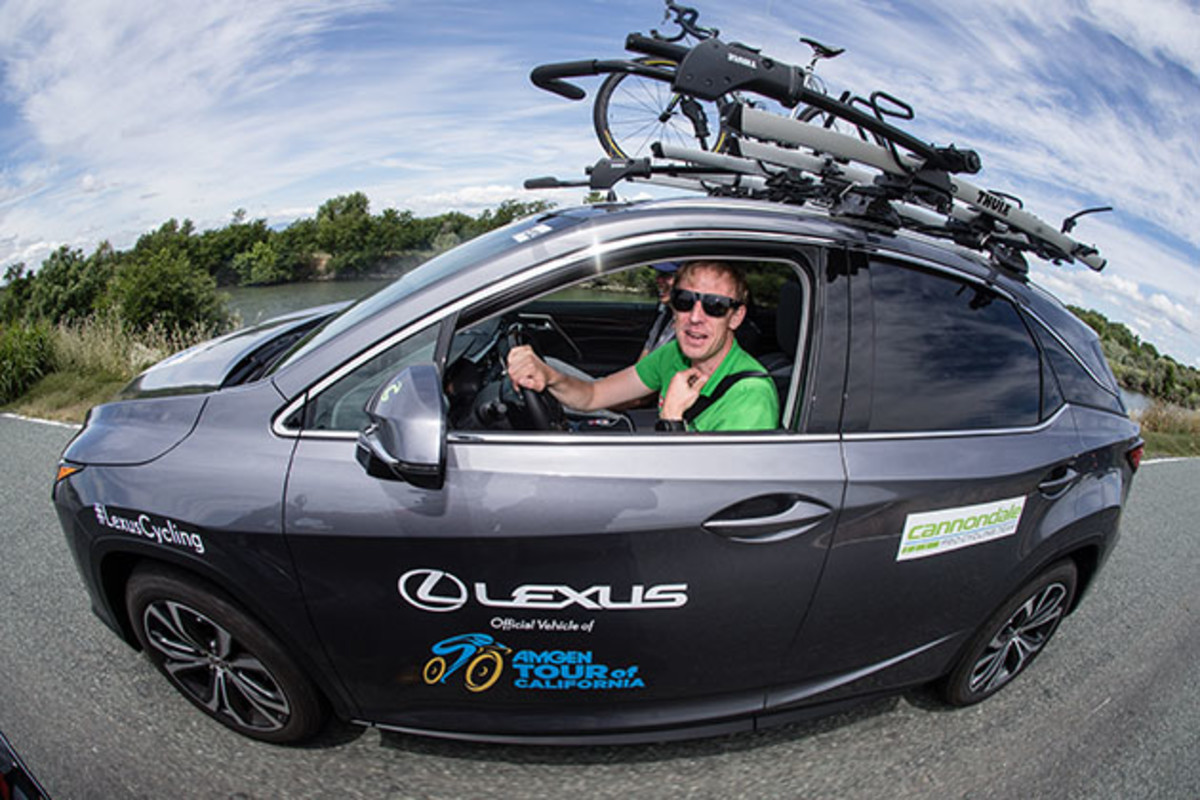
Mid-race the riders are kept fed and watered by support cars, and by soigneurs who pass them bags of supplies as they roll through feed zones. (A soigneur is a sort of mix between rider masseur, personal assistant, and motivational super fan.) No detail is spared in the quest for rider energy efficiency. Bananas, for example, are repackaged in Panini wrappers to make them that much easier to eat. “It’s food that comes already packaged—in its own little skin,” says Jon Adams, one of Cannondale’s soigneurs, “and we’re basically helping the riders a little bit further by slicing the banana just a bit so it’s easier to peel.”
But however meticulously prepared a team might be, races don’t always go to plan. Cannondale rider Patrick Bevin crashed at the feed zone 48 miles into Stage 3, damaging his bike and cutting his elbow badly. He was sent back into the race on a new bike and had his injury bandaged up, but with his role compromised. Instead of supporting Craddock and King, Bevin’s main goal became simply finishing the stage. And then King’s chain jammed as he was approaching the bottom of Gibraltar Road at the front of the peloton, ending his chance of hanging on to the leader’s jersey.
• How blood biomarker analysis can help plan meals, boost performance
Besides comfort, Cannondale’s reduced emphasis on bike aerodynamics also benefits weight—aero frames use more material and are thus heavier. Though UCI rules limit the minimum weight of road bikes to 6.8 kilograms (15.0 pounds), starting with an underweight bike means that ballast can be shifted to the bottom bracket to improve stability. And even between bikes at the legal limit, there is an important difference between wheel weight and frame weight. The Mavic Cosmic Carbon Ultimate race wheels used by Cannondale come in at 0.6 kilograms (1.3 pounds) each, 0.1 kilos (0.3 pounds) less than their Cosmic Carbon 40 training wheels. Spinning up a heavier wheel saps more energy than accelerating a heavier frame.
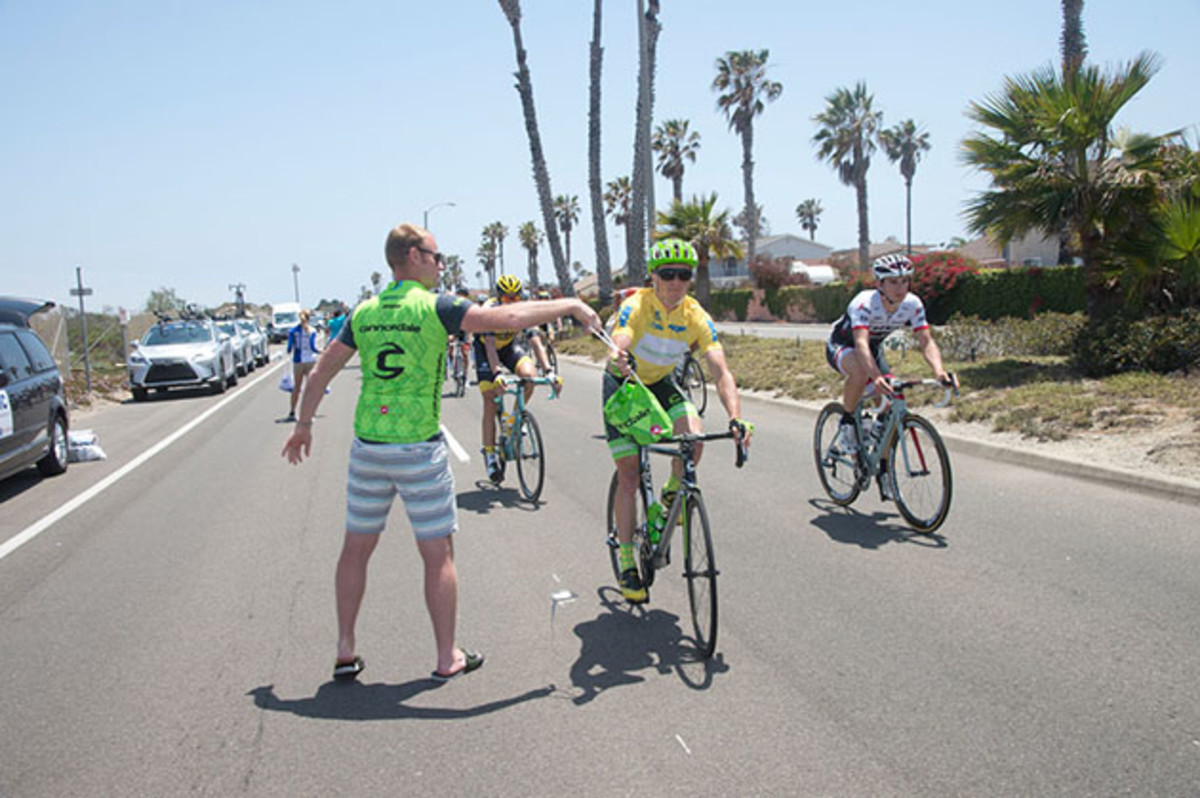
“It’s good to have a Cannondale because it’s one of the lightest bikes in the bunch,” said Wouter Wippert at the end of Stage 3. Wippert and teammate Alan Marangoni had been assigned the task of providing slipstream shelter for the rest of the team’s riders through the first 90 miles. From that point onwards, Wippert and Maragoni just needed to get their tired bodies up to the top within the cutoff time. “[Weight] makes a difference uphill,” Wippert said. “It makes a difference in your legs, but also in your head.”
Speeding through the fracturing peloton up the switchbacks of the final, long climb, Gárate refocused his energies on Craddock, Talansky and Phil Gaimon. The other five Cannondale riders were left behind for Charly Wegelius, another of the team’s sport directors, to sweep up in the second support vehicle. “Andrew and Phil, you take care of Lawson,” Gárate said over the radio. “We have nothing to lose, everything is to win.”
• Pikes Peak all-time record holder Carlin Dunne on Race to the Clouds
But through luck or judgment, other teams had played the energy conservation game better on the long lead up and climbed the hill faster. Talansky and Craddock crossed the line 10th and 13th, respectively, to stage winner and eventual tour winner Julian Alaphilippe, from the ETIXX–Quick-Step team. By the end of the final stage of the eight-day race, Talansky and Craddock would climbed back up to fourth and fifth, and King and Toms Skujiņš would have each notched up a stage win for Cannondale.
But in pro cycling there is little time to celebrate small victories. As the last rider crossed the Stage 8 finish line in Sacramento, Cannondale began redistributing resources again. A season of pro-cycling is a tournament of multi-stage races. The Baloise Belgium Tour was starting three days later, and the U.S. National Championships the following weekend. Riders, resources and staff needed to be swiftly reallocated around the world. New energy needed to be created, conserved, and expended.
